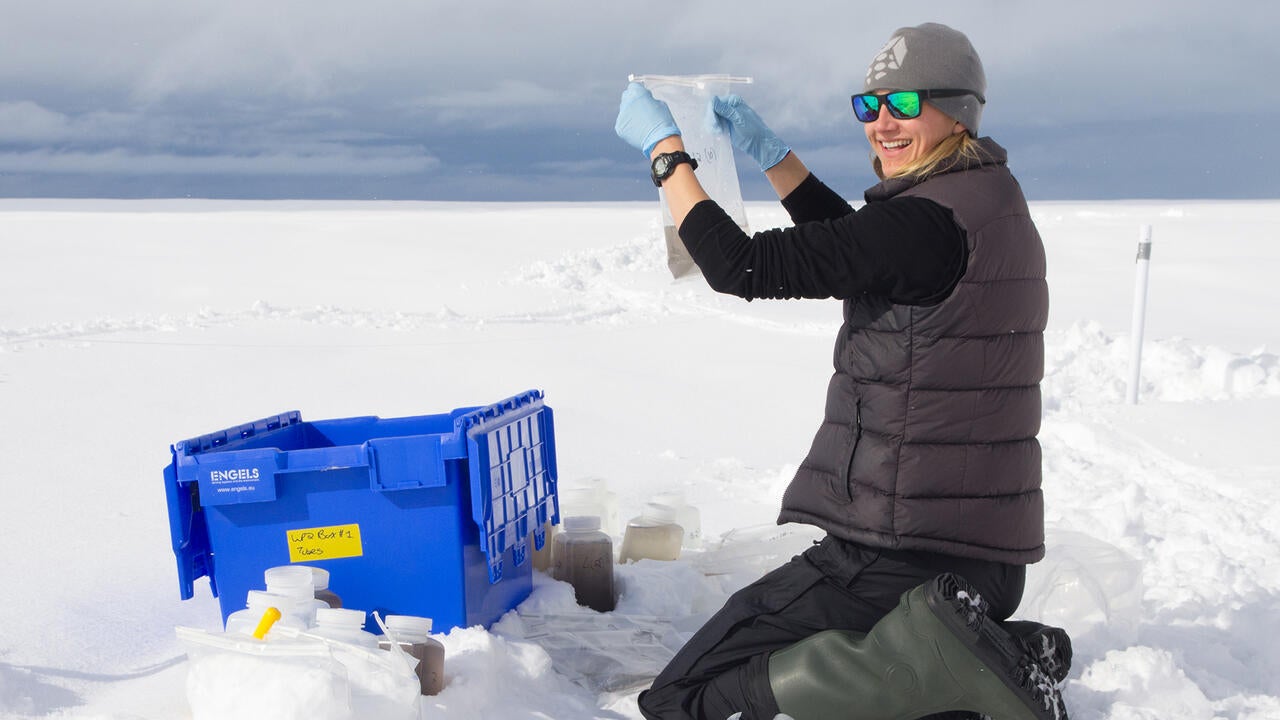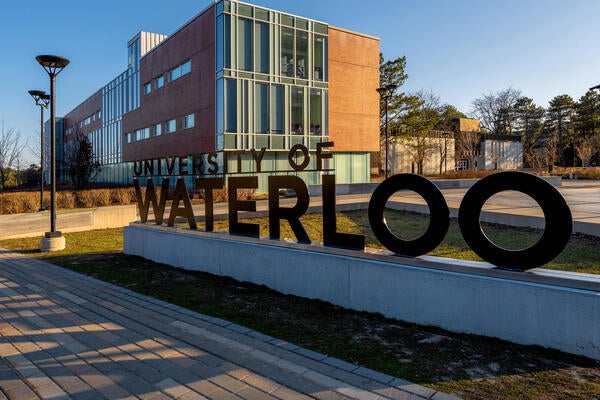
The Dark Zone of Greenland
How algae fuelled by phosphorus contributes to ice sheet melting

How algae fuelled by phosphorus contributes to ice sheet melting
By Elizabeth Kleisath Faculty of ScienceGreenland is the world’s largest “non-continental” island, and about 80 per cent of this island is covered by the Greenland Ice Sheet. In recent years, however, the melting of this ice sheet has accelerated, leading to an increased contribution to rising sea levels.
A portion of this increased melting can be attributed to the presence of dark algae on the ice sheet surface. Contrary to white, reflective ice, the dark pigmentation of these algae absorbs sunlight and warms the surrounding ice, causing melting. Climate change is causing Arctic summers to become warmer and longer than in the past. These longer summers allow for increased ice algal growth, and the resulting algal blooms are causing increased darkening and melting.
As a geomicrobiologist, Jenine McCutcheon, a professor in the Earth and Environmental Sciences department at the University of Waterloo, has been studying Greenland’s glacier algae in an effort to uncover their changing annual patterns. This research, done during her postdoctoral fellowship at the University of Leeds, was published January 25th in Nature Communications.
“What we’re trying to do is to better understand how algal blooms form, why they form where they do and is there a way to predict how they’ll form in future melt seasons,” says McCutcheon. “One season to the next, algal blooms may change and vary in intensity, making them difficult to model year-to-year.”

> Professor Jenine McCutcheon sampling snow and ice on the Greenland Ice Sheet.
> Photo: Andrew Tedstone, PhD
The study focused on five different locations along a large band on the Western edge of the Greenland Ice Sheet known as the “Dark Zone” due to its low albedo (a measure of the amount of solar radiation reflected by a surface). The ice surface in this zone is made dark by impurities such as algal cells, mineral dust, and black carbon (particles produced by fossil fuel combustion). Algal blooms are the primary cause of the darkening observed in this region.

> Aerial photo of the Greenland Ice Sheet’s Dark Zone.
> Photo: Professor Jenine McCutcheon
In order to determine where glacier algae get their nutrients, the team measured the photosynthesis rate of glacier algae in the presence of the different nutrients. They found that there was a distinct improvement when the algae were provided with phosphorus. The team concluded that the algal blooms in this region were regulated and limited by the presence of phosphorus.
Upon finding this, they analyzed the surface dust present in the Dark Zone around the algal blooms, and found the mineral hydroxylapatite. Hydroxylapatite contains the bio-available phosphorus needed to nourish the algae, and likely facilitates the development of glacier algal blooms by supplying phosphorus to the ice surface habitat.
The reliance of algae on this mineral dust then creates a positive feedback loop, wherein the more algae that bloom, the greater the ice sheet melting. As more ice melts, mineral dust frozen in the ice becomes exposed, thus providing more nutrients to help the glacier algae grow. However, more studies are needed to quantify this feedback loop and measure its extent.
“The findings of this study will impact how we predict where the blooms will happen in the future,” McCutcheon says. “We’re working to be able to model these algal blooms and match them with satellite data to get a better understanding of the overall impact of these algal blooms on ice sheet albedo reduction and resulting melting.”
This research was done through an international collaboration by researchers from the United Kingdom, Germany, Belgium, Canada, and Denmark, and was funded by the UK Natural Environmental Research Council Consortium Grant.

Read more
Funding will aid research to treat arsenic pollution in mines, enhance data privacy and address future infectious diseases

Read more
Fifty-six researchers receive Government of Canada funding to solve some of humanity’s most critical problems

Read more
Waterloo community supports eight local charities that are working to address global challenges by creating social impact within the region
The University of Waterloo acknowledges that much of our work takes place on the traditional territory of the Neutral, Anishinaabeg and Haudenosaunee peoples. Our main campus is situated on the Haldimand Tract, the land granted to the Six Nations that includes six miles on each side of the Grand River. Our active work toward reconciliation takes place across our campuses through research, learning, teaching, and community building, and is co-ordinated within the Office of Indigenous Relations.